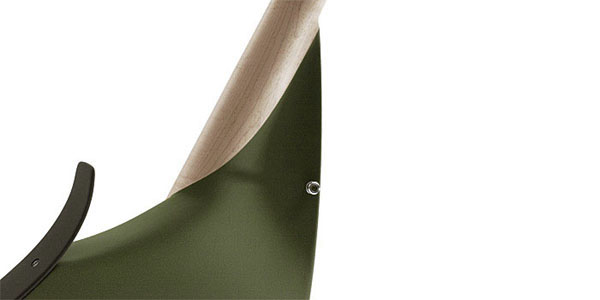 |
The tesla has a through-neck made of old bird's eye maple. In the zone where it crosses the body, the neck has two alder cap strips. Both body sides are made of American alder. The hardware is bolted on with hand polished stainless steel hex screws which lead into metal thread inserts. These bushings are exactly cut and glued into the guitar body. |
|
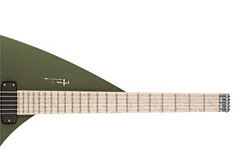 |
At the 7th fret the neck passes into the body. This makes the neck quite "short" and stiff. Low frequency resonances are supported by this construction. In the seven string version the sound of the low B string is unbeatably clear and powerful. |
||
 |
The transition of the neck into the body is in the shape of a groove which allows comfortable access to the higher frets. |
||
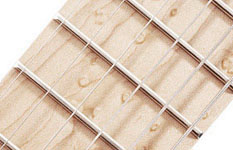 |
Like the birdfish, the fingerboard is sealed on the top to keep the wood from getting dirty. The back of the neck is sealed while keeping the pores open. This gives the neck a natural feel. |
||
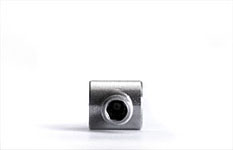 |
Also shown here: the 2-way-truss rod from hardened stainless steel. Its weight is 48 grams (1.7 oz). Just 1.7 oz! All tesla models have this truss rod. |
||
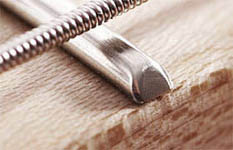 |
Each fret edge is rounded off and polished by hand. The fret slots end just before the neck edge so the frets can't stick out and affect playability during dry times in the winter. |
||
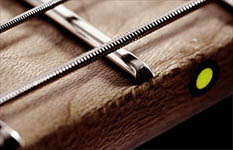 |
The fret markers are two-tone: outside there is a black circle for visibility under bright conditions. Inside I have included phosphorescent minerals to let the dots glow on a dark stage. | ||
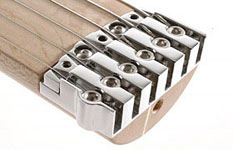 |
At the top end of the neck is a steel locking nut which locks each string seperately. The locking screws are made of extra durable stainless steel. I get them from a precision turning shop. For the price of six screws you could buy a whole Les Paul copy from China ex works. The ends of the string can be pressed into the little cavities behind the screws, so the string ends can't hurt you. The nut is height adjustable with little screws after fret dressing. The edge of the nut is adjusted to assure harmonic intonation. | ||
| copyright by Ulrich Teuffel | |||
